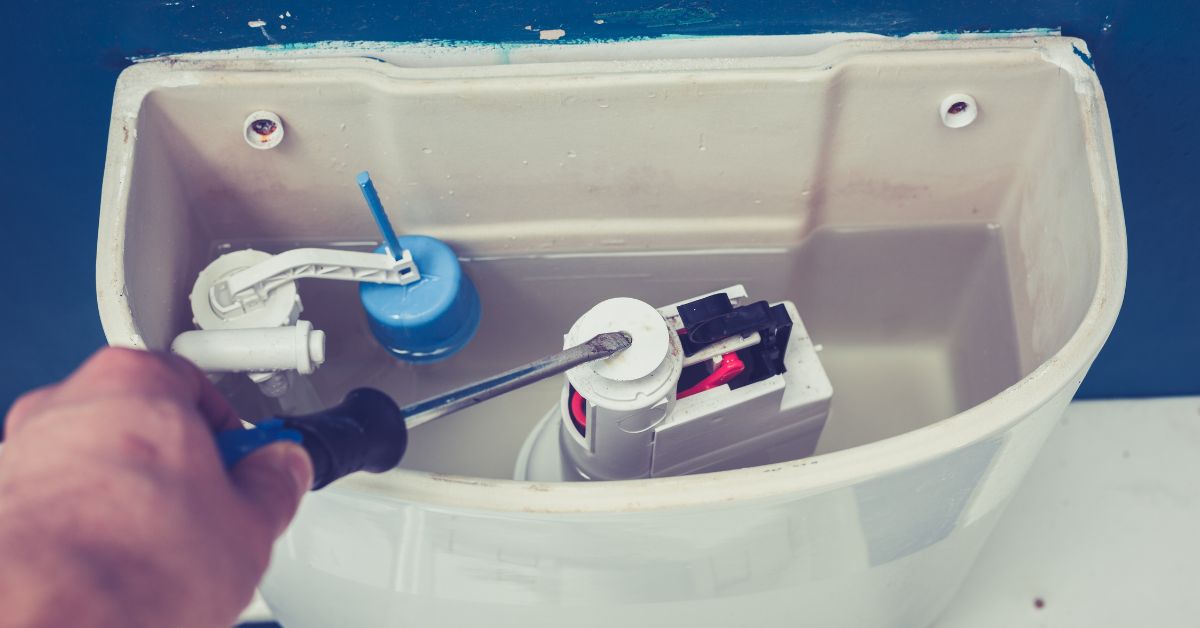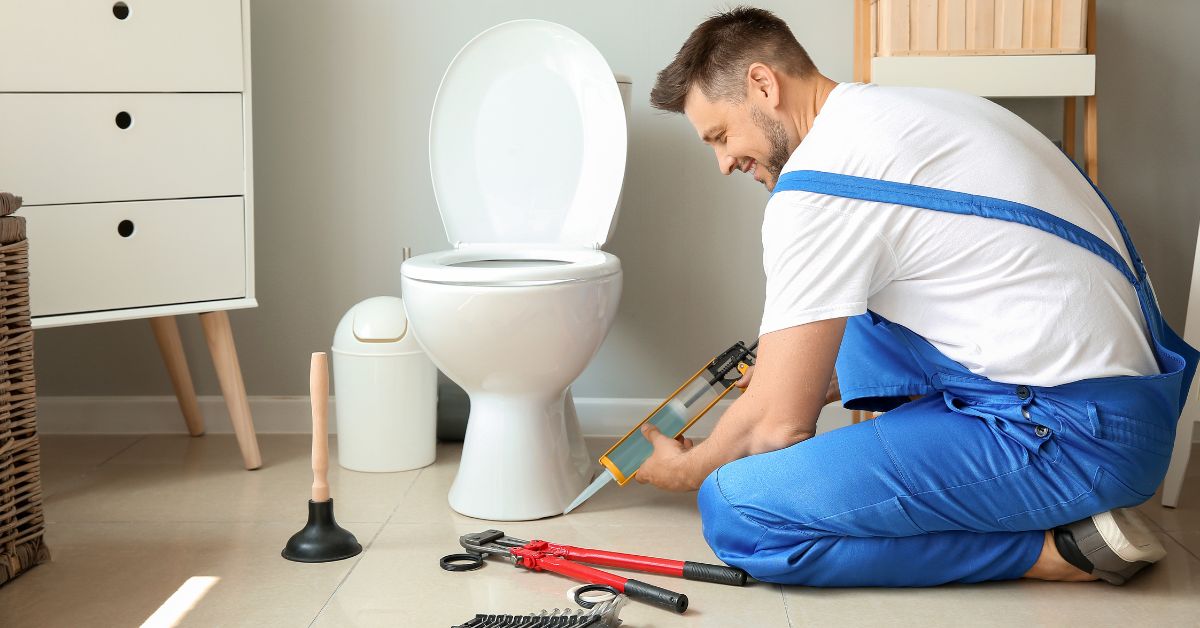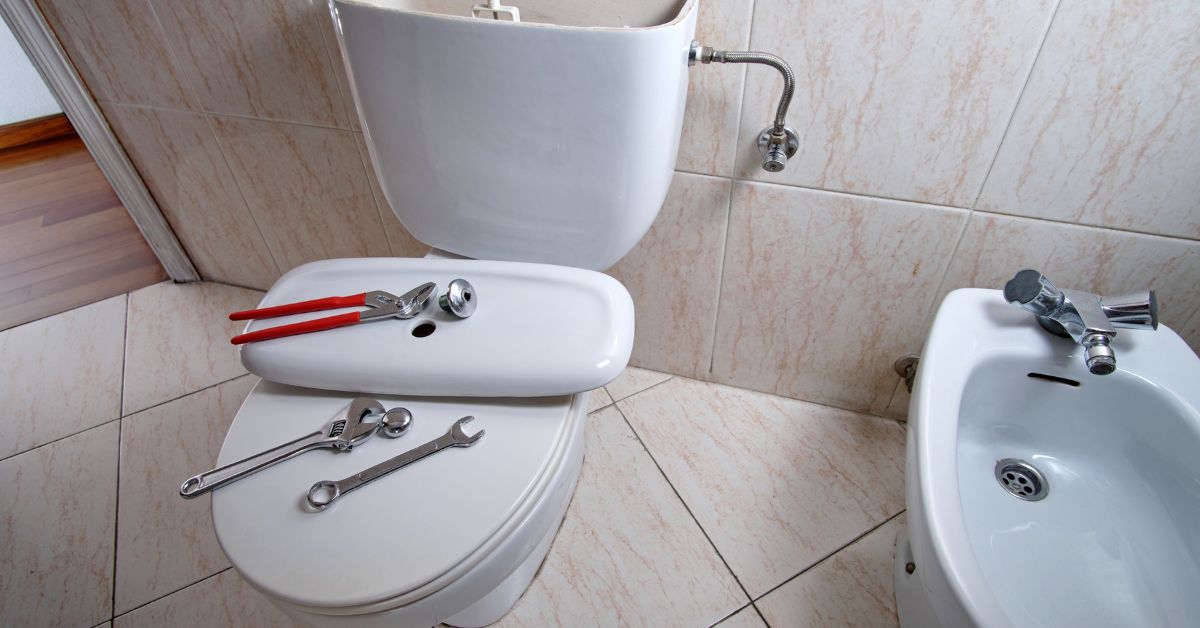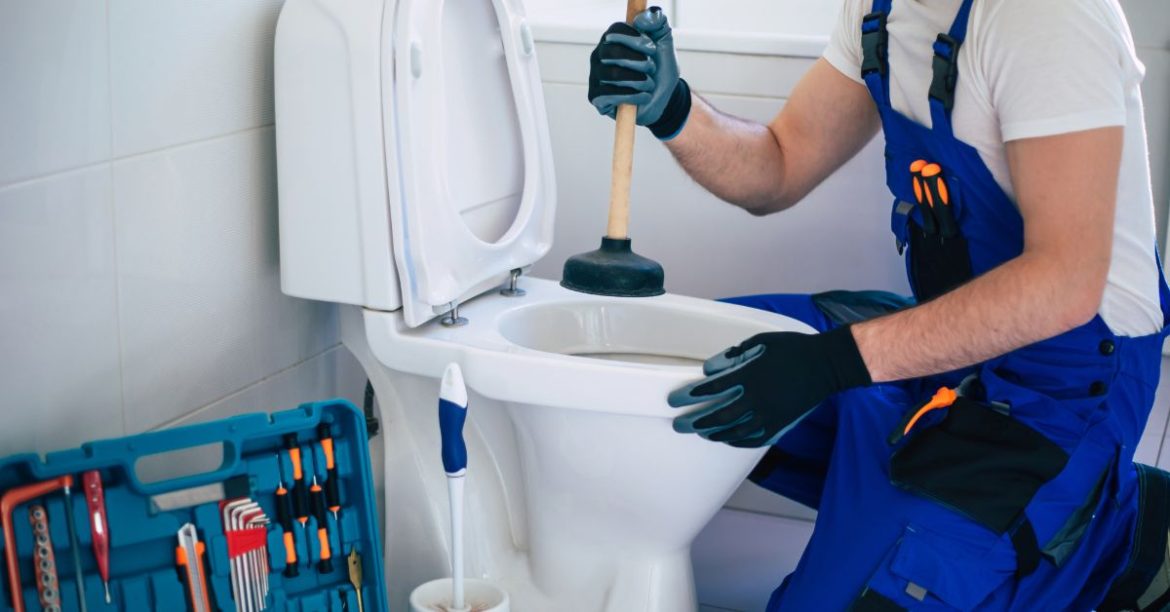Table of Contents
A hissing toilet can be a frustrating issue, disrupting the peace in your home and often signaling an underlying problem. Fortunately, identifying the cause of the toilet making hissing sound and applying the right fix can quickly resolve the issue. In this guide, we’ll explain why your toilet is making a hissing sound and how to fix it effectively. Understanding these issues not only saves money on water bills but also prevents more significant plumbing problems.
What Does a Hissing Sound in a Toilet Mean?
A hissing sound in your toilet usually indicates there is a problem with water flow or pressure within the tank. This noise often results from one or more components malfunctioning, such as the fill valve, flapper, or float mechanism. When these parts are not functioning correctly, water may escape or flow improperly, creating turbulence and vibrations that produce the hissing sound.
This sound serves as a warning sign of underlying issues that, if ignored, could lead to increased water waste, unnecessary wear and tear on toilet parts, and higher utility bills. Additionally, a persistent hissing sound could signify that your toilet is not operating efficiently, which may impact the overall performance of your plumbing system. Identifying and resolving the cause promptly can prevent more serious problems and ensure your toilet continues to function smoothly.
Common Causes of a Hissing Toilet
A hissing toilet can result from several common issues, each related to the components or conditions that regulate water flow and pressure within the tank.
Faulty Fill Valve
The fill valve is responsible for controlling water flow into the toilet tank after each flush. If this valve becomes worn out, damaged, or misaligned, it may fail to shut off properly, leading to a continuous flow of water that creates a hissing sound.
Over time, debris buildup, aging parts, or incorrect installation can compromise its function. A faulty fill valve not only creates noise but also wastes water, making timely replacement or adjustment essential.
Water Pressure Issues
High water pressure in your plumbing system can cause turbulence as water moves through the toilet’s valves, producing a hissing sound. Homes with overly strong water pressure systems are particularly prone to this issue.
Moreover, excessive water pressure doesn’t just create noise, it can also accelerate wear and tear on toilet components, reducing their lifespan. Installing a pressure regulator can help maintain an appropriate pressure range, ensuring smooth operation.
Worn-Out Flapper
The flapper acts as a rubber seal between the tank and the bowl, controlling water release during a flush. If the flapper becomes worn, warped, or fails to sit properly on its seat, it can allow water to trickle continuously into the bowl. This constant flow creates a hissing sound and increases water usage. Regularly inspecting and replacing a worn-out flapper can prevent leaks and restore quiet operation.

toilet making hissing sound
Improper Float Adjustment
The float mechanism regulates the water level in the toilet tank. If the float is set too high, it allows water to overflow into the tank’s overflow tube, leading to continuous water flow and a persistent hissing noise.
Conversely, a float set too low might not provide enough water for an effective flush. Adjusting the float to the correct level ensures the tank fills properly and eliminates unnecessary water flow and noise.
Mineral Buildup or Debris
Hard water can deposit minerals, such as calcium and lime, on the toilet’s internal components, restricting water flow and causing unusual sounds. Similarly, debris from the water supply can clog valves and other parts, interfering with their function.
These obstructions can lead to a hissing sound as water struggles to pass through restricted areas. Regular cleaning with vinegar or a descaling solution can remove buildup while installing a water filter can prevent debris from entering the system.
Quick Fixes for a Hissing Toilet
When your toilet produces a hissing sound, quick and targeted fixes can resolve the issue without extensive repairs. Here are detailed steps to address common causes:
Fixing the Fill Valve
The fill valve is a critical component that controls water flow into the toilet tank after a flush. When it’s worn or misaligned, it can cause continuous water flow and noise.
Fixing it can be straightforward with these steps:
- Turn off the water supply to the toilet by closing the shut-off valve located near the base of the toilet.
- Flush the toilet to empty the tank, which makes it easier to work on the valve.
- Inspect the fill valve for visible signs of wear, debris buildup, or misalignment. Common issues include loose fittings or obstructions.
- If the valve is misaligned, adjust it to sit properly within the tank. For damaged or excessively worn parts, replace the fill valve with a new, compatible model from your local hardware store.
- Turn the water supply back on and flush the toilet to test if the noise has been resolved.
Adjusting the Water Pressure
Excessively high water pressure can cause turbulence and noise in your toilet’s plumbing system. To address this:
- Use a water pressure gauge to check your home’s water pressure at an outdoor spigot or supply line. These gauges are affordable and widely available.
- The ideal water pressure for most homes ranges between 40-60 PSI. If your pressure exceeds this range, install a pressure-reducing valve (PRV) on the main water supply line.
- After installation, recheck the water pressure and test the toilet to see if the noise has stopped. Adjust the PRV settings as needed to maintain optimal pressure.

toilet making hissing sound
Replacing the Flapper
A worn-out flapper often causes leaks and hissing sounds as water escapes from the tank into the bowl. Here’s how to fix it:
- Turn off the water supply and flush the toilet to empty the tank.
- Carefully remove the old flapper by detaching it from the overflow tube. Take note of how it is connected for easier installation of the replacement.
- Clean the area around the flapper seat to remove any debris or mineral buildup. This ensures a proper seal.
- Install a new flapper, ensuring it is compatible with your toilet model. Most flappers are universal, but some brands require specific designs.
- Turn the water supply back on and flush the toilet to test for leaks or noise.
Adjusting the Float
The float mechanism determines the water level in the toilet tank. An improperly adjusted float can cause overflow or insufficient filling, leading to noise:
- Locate the float mechanism inside the tank. It may be a ball float or a cylinder float, depending on your toilet’s design.
- Adjust the float height using the adjustment screw or clip to set the water level just below the overflow tube. This prevents overflows and ensures adequate filling.
- Flush the toilet and observe whether the hissing sound stops. Fine-tune the adjustment if necessary.
Cleaning or Replacing Components
Mineral buildup and debris are common culprits for noisy toilets, particularly in areas with hard water. To resolve this:
- Turn off the water supply and flush the toilet to empty the tank.
- Use a brush and a vinegar solution to clean mineral deposits from valves, the flapper, and other tank components. Allow the vinegar to sit for a few minutes on heavily scaled areas before scrubbing.
- If cleaning does not resolve the issue, consider replacing the affected components with new ones. Look for high-quality replacement parts to ensure durability and proper function.
With these fixes, most hissing toilet problems can be resolved quickly and effectively, restoring peace and efficiency to your bathroom.

toilet making hissing sound
When to Call a Professional
If the hissing sound persists after trying the above fixes, it may be time to call a plumber. Some issues may require advanced tools or expertise to diagnose and repair. Call a professional if you notice:
- Cracks in the tank or bowl.
- Water pooled around the base of the toilet, indicating potential leaks.
- Persistent high water bills despite fixing the toilet components.
- Issues with your home’s plumbing system that affect multiple fixtures.
Preventing Future Hissing Sounds
Regular Maintenance: Check and clean toilet components every few months to ensure smooth operation.
Monitor Water Pressure: Use a pressure gauge periodically to ensure your water pressure stays within safe levels.
Replace Worn Parts: Don’t wait for parts to fail; replace them as they show signs of wear.
Use Quality Parts: Invest in high-quality components to reduce the risk of future issues.
Inspect After Repairs: After any plumbing work, ensure all parts are properly aligned and functioning.
Conclusion
A hissing toilet is more than just a noisy inconvenience, it can waste water, increase your bills, and indicate a deeper plumbing issue. By identifying the cause and applying the appropriate fix, you can resolve the issue quickly and effectively.
Whether it’s adjusting the float, replacing a worn-out flapper, or cleaning the fill valve, these steps will restore your toilet’s quiet operation. For persistent problems, don’t hesitate to call a professional plumber. With these tips, you can enjoy a quieter, more efficient toilet and peace of mind.
FAQs
1. Why does my toilet make a hissing sound at night?
At night, water pressure in your home’s plumbing system may increase due to lower demand. This higher pressure can cause hissing sounds, especially if your toilet’s components are already worn or misaligned.
2. Is a hissing toilet wasting water?
Yes, a hissing toilet often indicates continuous water flow or leaks, leading to significant water waste over time. Fixing the issue promptly can save both water and money.
3. Can a hissing toilet damage my plumbing?
While the noise itself doesn’t cause damage, unresolved issues like high water pressure or continuous leaks can strain your plumbing system, potentially leading to more serious problems.
4. How can I tell if the hissing sound is due to a specific component?
Isolate the issue by inspecting each part of the toilet tank, starting with the fill valve and flapper. Listen closely for the source of the sound and check for visible signs of wear or leaks.
